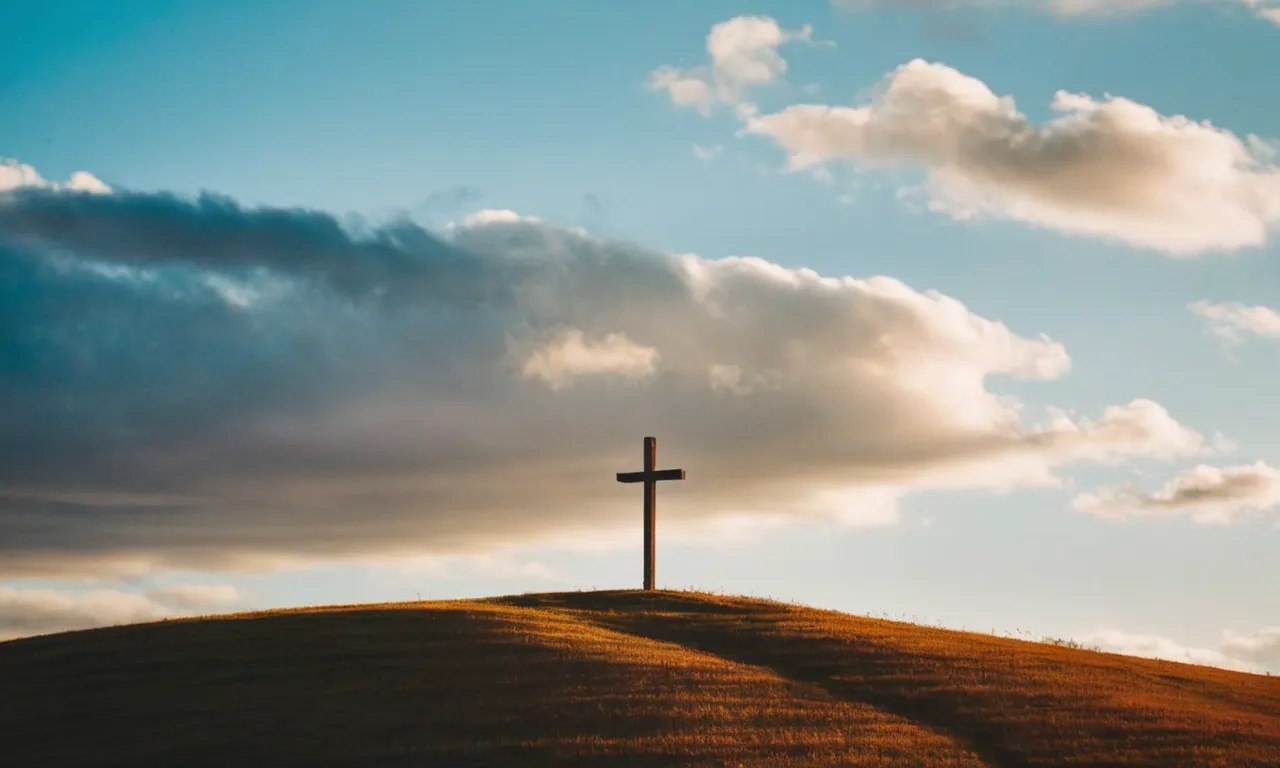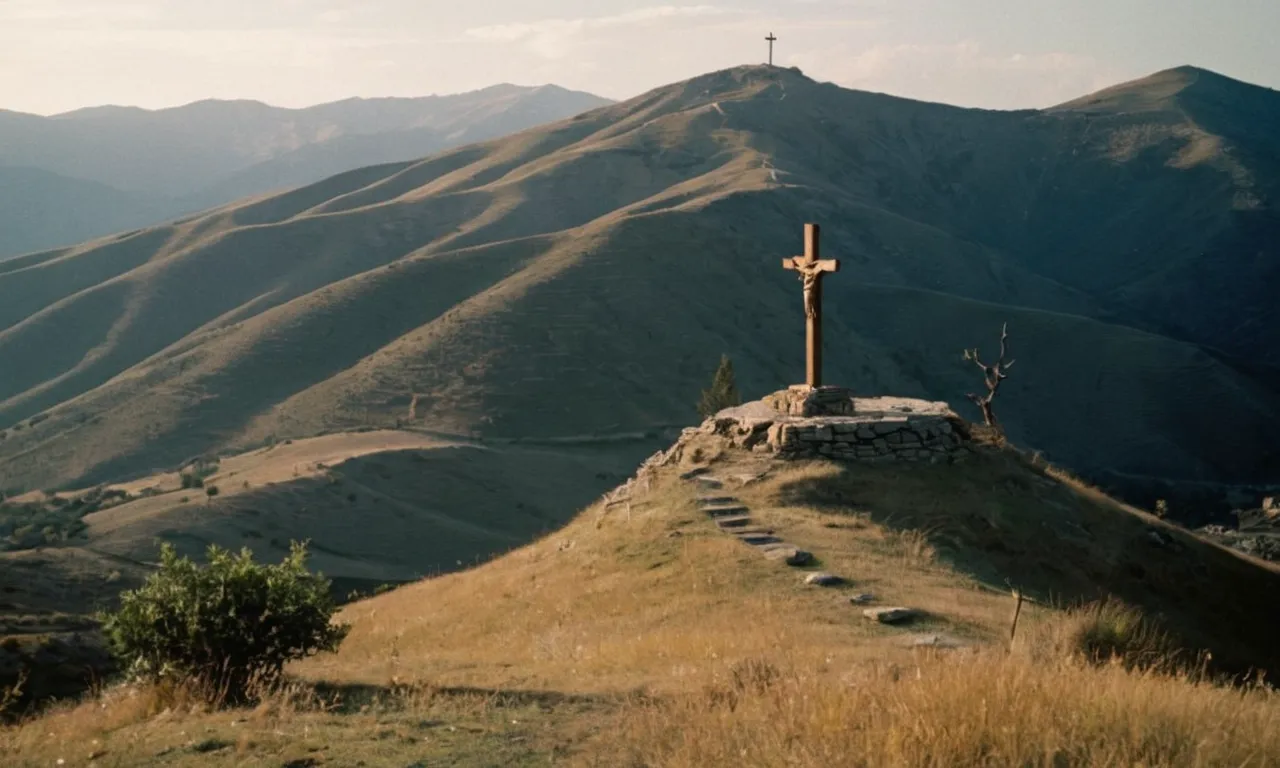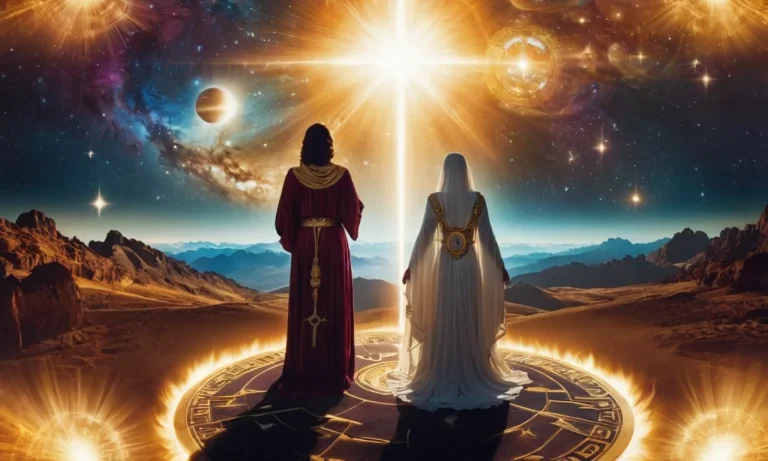Where Was Jesus Crucified? A Look At Golgotha And Calvary
The crucifixion of Jesus Christ is one of the most monumental events in history. If you’re wondering exactly where Jesus was crucified and want to see pictures of the site, read on.
If you’re short on time, here’s a quick answer: according to the Bible, Jesus was crucified at Golgotha, also known as Calvary, located just outside the walls of Jerusalem in modern-day Israel.
In this comprehensive article, we will examine the biblical and historical accounts to understand where Golgotha is located. We will explore the significance of this site and look at pictures to envision where the crucifixion took place.
Identifying Golgotha, the Site of the Crucifixion
The Biblical Accounts Point to a Spot Outside Jerusalem’s Walls
The Gospel accounts provide some clues that help identify the location of Jesus’ crucifixion.
According to the Gospel of John, Jesus was crucified at a spot called Golgotha, meaning “The Place of the Skull” (John 19:17). This was outside the city walls of Jerusalem at the time (Hebrews 13:12).
The Gospels of Matthew, Mark, and Luke all state that Jesus was crucified at “The Place of the Skull” (Matthew 27:33; Mark 15:22; Luke 23:33). This spot was located near a road, as passersby mocked Jesus as he hung on the cross (Matthew 27:39).
Therefore, early Christian sources understood Golgotha to be a site just outside Jerusalem’s walls where executions took place.
Archaeological evidence confirms the practice of crucifixion happening outside the city gates during the first century.
The Site’s Association with Skulls and Graves
The meaning of Golgotha as “The Place of the Skull” also fits with what archaeology tells about the area.
In the first century, the spot was an abandoned stone quarry just outside Jerusalem’s walls. As an execution ground, it contained many human remains.
The exposed rock of the quarry even resembled a skull, perhaps leading to the name Golgotha.
Early pilgrims to Jerusalem reported seeing rock formations that looked like skulls at the accepted site.
Jewish law also required burial grounds to be located outside the city proper. Several ancient Jewish tombs have been found just north and east of the traditional Golgotha, the direction early pilgrims reported.
Even today, ancient grave markers are visible set into the ground near the Church of the Holy Sepulchre in Jerusalem. This long association with burial makes the area a very suitable place for Jesus’ crucifixion site outside the walls yet near the road.

The Possible Location of Calvary Today
The Traditional Site at the Church of the Holy Sepulchre
The most widely accepted site for Jesus’ crucifixion is inside the Church of the Holy Sepulchre in Jerusalem. This site has been venerated as Golgotha, the place of Jesus’ crucifixion, since at least the 4th century AD.
According to an ancient Christian tradition, Helena, the mother of Roman emperor Constantine, identified the site in 326 AD based on visions and information from local Christians.
The Holy Sepulchre contains two main parts – the site of the crucifixion, and the tomb where Jesus was reportedly buried and resurrected.
Millions of pilgrims visit the church each year to see the sites and walk the Via Dolorosa, following the traditional path Jesus took while carrying his cross.
While the traditional location inside the ancient church continues to be accepted by most scholars, some have questioned whether the correct site could be located somewhere else outside the current Old City walls of Jerusalem:
- The area was severely destroyed by Roman troops in 70 AD.
- The location of the church was identified through spiritual visions rather than definite archeological or historical evidence.
- Some historians propose the actual site was to the north or south of the modern Old City.
Still, the weight of tradition continues to favor The Church of the Holy Sepulchre as authentic. Its preservation across centuries and acceptance across most Christian denominations cement its legitimacy for the majority of believers.
Gordon’s Calvary near the Garden Tomb
An alternate site, known as Gordon’s Calvary, is located several hundred yards north of Damascus Gate near a site called The Garden Tomb.
This site contains an ancient skull-shaped hillside and first-century tomb considered by some to match details from the Biblical accounts.
In the mid 19th century, Otto Thenius was the first modern researcher to propose this area as the original crucifixion site, partly due to the skull-like formation in the hillside.
Later, Major-General Charles Gordon strongly advocated the area during a visit in 1883, lending his name to “Gordon’s Calvary.”
Key factors lead advocates to propose Gordon’s Calvary as the place of Jesus’ crucifixion:
- The skull-shaped hill matches some interpretations of the name “Golgotha” meaning “place of the skull.”
- The nearby tomb resembles first-century Jewish burial caves described in the Gospels.
- The location was outside the city walls of Jerusalem in Jesus’ time, fitting Biblical accounts.
- Soil tests suggest an ancient stone quarry was once located there.
While Gordon’s Calvary lacks definitive proof or Christian tradition tying it to the crucifixion, its evocative imagery keeps interest alive, especially among Protestants.
Still, mainstream archeology contends its claims are circumstantial rather than conclusive.
Significance of Jesus’ Death at Golgotha
Fulfillment of Scripture and Sacrifice for Sins
Jesus’ death at Golgotha fulfilled many Old Testament prophecies about the Messiah’s sacrificial death for the atonement of sins.
Isaiah 53 prophesied that the Messiah would be “pierced for our transgressions” and “crushed for our iniquities” (Isaiah 53:5).
Jesus’ death on the cross at Golgotha paid the penalty for humankind’s sins once and for all. The location of Golgotha symbolized Jesus’ death as a sacrifice, just outside Jerusalem where the temple sacrifices occurred.
The Book of Hebrews explains that Jesus’ sacrifice replaced the need for ongoing animal sacrifices (Hebrews 10:1-18).
Contrast with Garden of Eden
The Garden of Eden was the location of the first sin, when Adam and Eve disobeyed God’s command. This brought sin and death into the world.
In contrast, Golgotha is where Jesus paid the price for sin, reversing the curse from the Garden of Eden. Paul explains that “as in Adam all die, so in Christ all will be made alive” (1 Corinthians 15:22).
Where Adam brought death, Christ at Golgotha brought life for all who believe. The skull-like appearance of Golgotha even symbolizes Christ’s victory over death.
Contrast with Temple Site
The Jewish temple in Jerusalem represented God’s presence with His people, and the need for atonement sacrifices. But Jesus’ death at Calvary replaced temple sacrifices with a perfect, once-for-all sacrifice.
The temple represented what was to come; Golgotha fulfilled it. The thick temple curtain tore from top to bottom when Jesus died (Mark 15:38), symbolizing direct access to God. Animal sacrifices could only temporarily cover sin; Christ’s blood atones eternally (Hebrews 10:4, 10:12).
Conclusion
The crucifixion site of Jesus Christ holds deep spiritual meaning for Christians today. While debate continues about the exact spot known as Golgotha, visiting these traditional locations in Jerusalem can help us reflect on Christ’s atoning sacrifice.
Seeing pictures of the barren hill of Golgotha and tomb nearby allows our imaginations to envision the agonizing events of the Passion.
As we contemplate Jesus’ willing death for our salvation, we stand in awe of God’s redemptive plan that began over 2,000 years ago.







